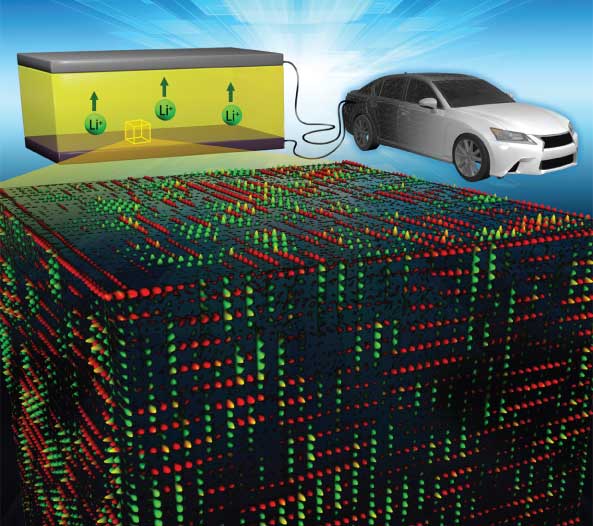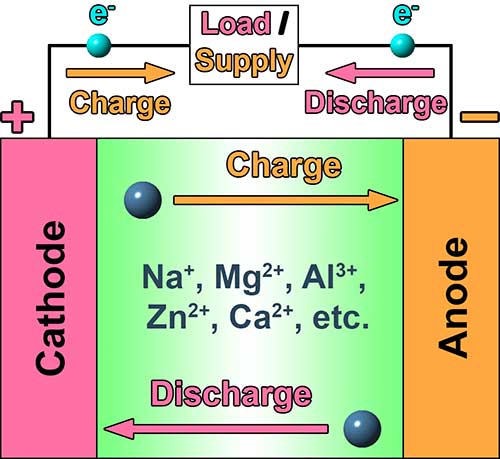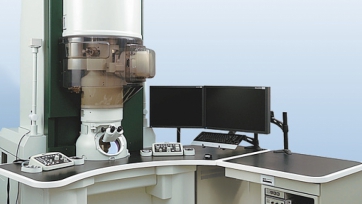|
"I have no special talents. I am only passionately curious."
− Albert Einstein |
Overview
The research in the M-Laboratory is highly interdisciplinary. Through collaboration, our research activity spans chemistry, physics, and materials science. The topics range from batteries to piezoelectric energy harvesting, from fuel cells to catalytic energy conversion, from complex oxide heterostructures to graphene-inspired 2D materials.
Regardless, our core interest lies in critical materials for energy storage. The overarching goal is to enable an effective materials design that can overcome the bottlenecks of this important field in a knowledge-based manner. The methods we use or develop are largely based on a synergistic utilization of materials synthesis and aberration-corrected (scanning) transmission electron microscopy ((S)TEM). Currently our research focuses on the three topical areas below.
1. All-solid-state Li batteries
 The safety concerns and insufficient energy density are the two most formidable bottlenecks for Li-ion batteries; because of them, the development of multiple promising energy solutions, e.g. electric vehicles, grid energy storage, etc., is severely hindered. Fortunately, the novel all-solid-state Li battery, which utilizes solid electrolytes instead of the conventional organic liquid ones, is a promising solution to both. It not only circumvents the flammability and leakage problems of liquid electrolytes, but also allows for high battery voltages that greatly surpass the limit of Li-ion batteries. These attractive characteristics have made the all-solid-state Li battery a focal point for both the academia and industry. Nevertheless, before all-solid-state batteries can replace conventional Li-ion batteries, at least two challenges need to be overcome: 1) The ionic conductivity of solid electrolytes must be further improved to enable a sufficiently fast charge and discharge; 2) Conductive, stable interfaces between the solid electrolyte and electrodes should be ensured. In light of these missions, the M-Laboratory will use aberration-corrected (S)TEM to unravel the mechanisms of relevant phenomena at the atomic scale; based on such knowledge, a rational materials design and/or improvement will be performed.
2. Novel batteries based-on non-Li ions
In the past 20 years, batteries based on Li ions have dominated the field of electrochemical energy storage. In spite of the apparent advantages, using Li + as the charge carrier also introduces several stubborn problems, e.g. dendrite growth of Li metal, high cost, low energy density (only one charge per ion), etc..  As a result, there have been more and more intense interests in developing batteries based on non-Li ions. For example, due to the abundance of Na, the cost of Na-ion batteries could be much lower than their Li-ion counterparts. Also, the multivalent ions, e.g. Mg 2+, Al 3+, Zn 2+, etc., can transfer more electrons in a single redox couple, and many of them are not severely plagued by the dendrite formation issue. These characteristics hold great promise for realizing much higher energy densities than Li-ion batteries. Regardless, the development of non-Li-ion batteries is still in its infancy. There remain lots of mysteries about the ionic transport and phase transitions associated with the charge/discharge of electrode materials. The M-Laboratory will strive to fill this gap, enabling a knowledge-based search/design of materials for the aforementioned novel batteries.  Aberration-corrected (S)TEM is a powerful tool in materials study. It not only can directly visualize the atomic structure of materials, but can also provide detailed chemical information at such an ultrahigh spatial resolution. Aiming at further elevating the capability of this cutting-edge technique, the M-Laboratory is dedicated to develop various (S)TEM methodologies. Depending on the specific scientific challenges we encounter in the research described above, the focus of this part may be placed on novel imaging techniques, high-quality specimen preparation, data analysis, or in-situ observation. |

